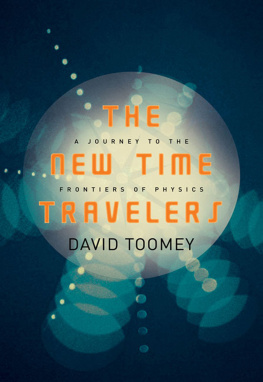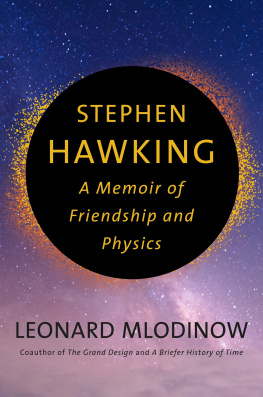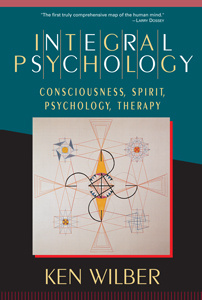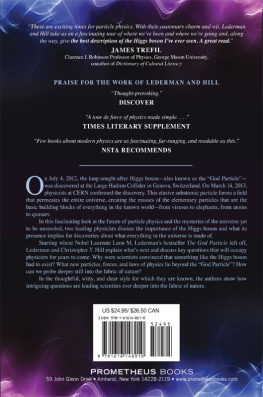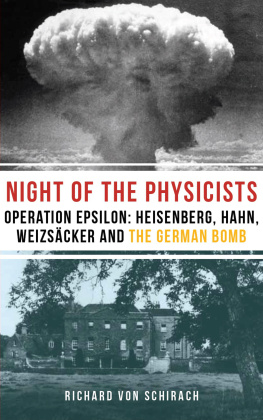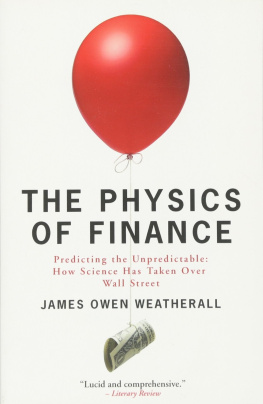Cropper - Great physicists: the life and times of leading physicists from Galileo to Hawking
Here you can read online Cropper - Great physicists: the life and times of leading physicists from Galileo to Hawking full text of the book (entire story) in english for free. Download pdf and epub, get meaning, cover and reviews about this ebook. City: Oxford, year: 2004, publisher: Oxford University Press, genre: Non-fiction. Description of the work, (preface) as well as reviews are available. Best literature library LitArk.com created for fans of good reading and offers a wide selection of genres:
Romance novel
Science fiction
Adventure
Detective
Science
History
Home and family
Prose
Art
Politics
Computer
Non-fiction
Religion
Business
Children
Humor
Choose a favorite category and find really read worthwhile books. Enjoy immersion in the world of imagination, feel the emotions of the characters or learn something new for yourself, make an fascinating discovery.

- Book:Great physicists: the life and times of leading physicists from Galileo to Hawking
- Author:
- Publisher:Oxford University Press
- Genre:
- Year:2004
- City:Oxford
- Rating:3 / 5
- Favourites:Add to favourites
- Your mark:
- 60
- 1
- 2
- 3
- 4
- 5
Great physicists: the life and times of leading physicists from Galileo to Hawking: summary, description and annotation
We offer to read an annotation, description, summary or preface (depends on what the author of the book "Great physicists: the life and times of leading physicists from Galileo to Hawking" wrote himself). If you haven't found the necessary information about the book — write in the comments, we will try to find it.
Cropper: author's other books
Who wrote Great physicists: the life and times of leading physicists from Galileo to Hawking? Find out the surname, the name of the author of the book and a list of all author's works by series.
Great physicists: the life and times of leading physicists from Galileo to Hawking — read online for free the complete book (whole text) full work
Below is the text of the book, divided by pages. System saving the place of the last page read, allows you to conveniently read the book "Great physicists: the life and times of leading physicists from Galileo to Hawking" online for free, without having to search again every time where you left off. Put a bookmark, and you can go to the page where you finished reading at any time.
Font size:
Interval:
Bookmark:
Great Physicists
The Life and Times of Leading Physicists from Galileo to Hawking
William H. Cropper


Oxford New York
Athens Auckland Bangkok Bogota Buenos Aires
Cape Town Chennai Dar es Salaam Delhi Florence Hong Kong Istanbul
Karachi Kolkata Kuala Lumpur Madrid Melbourne Mexico City Mumbai
Nairobi Paris Sao Paulo Shanghai Singapore Taipei Tokyo Toronto Warsaw
and associated companies in
Berlin Ibadan
Copyright 2001 by Oxford University Press, Inc.
Published by Oxford University Press, Inc.
198 Madison Avenue, New York, New York 10016
Oxford is a registered trademark of Oxford University Press
All rights reserved. No part of this publication may be reproduced,
stored in a retrieval system, or transmitted, in any form or by any means,
electronic, mechanical, photocopying, recording, or otherwise,
without the prior permission of Oxford University Press.
Library of Congress Cataloging-in-Publication Data
Cropper, William H.
Great Physicists: the life and times of leading physicists from Galileo to Hawking /
William H. Cropper.
p. cm Includes bibliographical references and index.
ISBN 0-19-513748-5
1. PhysicistsBiography. I. Title.
QC15. C76 2001 530.0922dc21 [B] 2001021611
987654321
Printed in the United States of America
on acid-free paper
This book tells about lives in science, specifically the lives of thirty from the pantheon of physics. Some of the names are familiar (Newton, Einstein, Curie, Heisenberg, Bohr), while others may not be (Clausius, Gibbs, Meitner, Dirac, Chandrasekhar). All were, or are, extraordinary human beings, at least as fascinating as their subjects. The short biographies in the book tell the stories of both the people and their physics.
The chapters are varied in format and length, depending on the (sometimes skimpy) biographical material available. Some chapters are equipped with short sections (entitled Lessons) containing background information on topics in mathematics, physics, and chemistry for the uninformed reader.
Conventional wisdom holds that general readers are frightened of mathematical equations. I have not taken that advice, and have included equations in some of the chapters. Mathematical equations express the language of physics: you cant get the message without learning something about the language. That should be possible if you have a rudimentary (high school) knowledge of algebra, and, if required, you pay attention to the Lessons sections. The glossary and chronology may also prove helpful. For more biographical material, consult the works cited in the Invitation to More Reading section.
No claim is made that this is a comprehensive or scholarly study; it is intended as recreational reading for scientists and students of science (formal or informal). My modest hope is that you will read these chapters casually and for entertainment, and learn the lesson that science is, after all, a human endeavor.
William H. Cropper
It is a pleasure to acknowledge the help of Kirk Jensen, Helen Mules, and Jane Lincoln Taylor at Oxford University Press, who made an arduous task much more pleasant than it might have been. I Am indebted to my daughters, Hazel and Betsy, for many things, this time for their artistry with computer software and hardware.
I am also grateful for permission to reprint excerpts from the following publications:
Subtle is the Lord: The Science and Life of Albert Einstein, by Abraham Pais, copyright 1983 by Abraham Pais. Used by permission of Oxford University Press, Inc.; The Quantum Physicists, by William H. Cropper, copyright 1970 by Oxford University Press, Inc. Used by permission of Oxford University Press, Inc.; Ludwig Boltzmann:The Man Who Trusted Atoms, by Carlo Cercignani, copyright 1998 by Carlo Cercignani. Used by permission of Oxford University Press, Inc.; Lise Meitner: A Life in Physics, by Ruth Lewin Sime, copyright 1996 by the Regents of the University of California. Used by permission of the University of California Press; Marie Curie: A Life, by Susan Quinn, copyright 1996, by Susan Quinn. Used by permission of the Perseus Books Group; Atoms in the Family: My Life with Enrico Fermi, by Laura Fermi, copyright 1954 by The University of Chicago. Used by permission of The University of Chicago Press; Enrico Fermi, Physicist, by Emilio Segr, copyright 1970 by The University of Chicago. Used by permission of The University of Chicago Press; Strange Beauty: Murray Gell-Mann and the Revolution in Twentieth-Century Physics, by George Johnson, copyright 1999 by George Johnson. Used by permission of Alfred A. Knopf, a division of Random House, Inc. Also published in the United Kingdom by Jonathan Cape, and used by permission from the Random House Group, Limited; QED and the Men Who Made It, by Silvan S. Schweber, copyright 1994 by Princeton University Press. Used by permission of Princeton University Press; Surely Youre Joking, Mr. Feynman by Richard Feynman as told to Ralph Leighton, copyright 1985 by Richard Feynman and Ralph Leighton. Used by permission of W.W. Norton Company, Inc. Also published in the United Kingdom by Century, and used by permission from the Random House Group, Limited; What Do You Care What Other People Think?, by Richard Feynman as told to Ralph Leighton, copyright 1988 by Gweneth Feynman and Ralph Leighton. Used by permission of W.W. Norton Company, Inc.; The Feynman Lectures on Physics, by Richard Feynman, Robert Leighton, and Matthew Sands, copyright 1988 by Michelle Feynman and Carl Feynman. Used by permission of the Perseus Books Group; Chandra: A Biography of S. Chandrasekhar, by Kameshwar Wali, copyright 1991 by The University of Chicago. Used by permission of The University of Chicago Press; Edwin Hubble: Mariner of the Nebulae, by Gale E. Christianson, copyright 1995 by Gale E. Christianson. Used by permission of Farrar, Straus and Giroux, L.L.C. Published in the United Kingdom by the Institute of Physics Publishing. Used by permission of the Institute of Physics Publishing; Rudolf Clausius and the Road to Entropy, by William H. Cropper, American Journal of Physics , 1986, pp. 10681074, copyright 1986 by the American Association of Physics Teachers. Used by permission of the American Institute of Physics; Walther Nernst and the Last Law, by William H. Cropper, Journal of Chemical Education , 1987, pp. 3-8, copyright 1987 by the Division of Chemical Education, American Chemical Society. Used by permission of the Journal of Chemical Education;Carnots Function, Origins of the Thermodynamic Concept of Temperature, by William H. Cropper, American Journal of Physics , 1987, pp. 120-129, copyright 1987 by the American Association of Physics Teachers. Used by permission of the American Institute of Physics; James Joules Work in Electrochemistry and the Emergence of the First Law of Thermodynamics, by William H. Cropper, Historical Studies in the Physical and Biological Sciences , 1986, pp. 116, copyright 1988 by the Regents of the University of California. Used by permission of the University of California Press.
All of the portrait photographs placed below the chapter headings were supplied by the American Institute of Physics Emilio Segr Visual Archives, and are used by permission of the American Institute of Physics. Further credits are:
Next pageFont size:
Interval:
Bookmark:
Similar books «Great physicists: the life and times of leading physicists from Galileo to Hawking»
Look at similar books to Great physicists: the life and times of leading physicists from Galileo to Hawking. We have selected literature similar in name and meaning in the hope of providing readers with more options to find new, interesting, not yet read works.
Discussion, reviews of the book Great physicists: the life and times of leading physicists from Galileo to Hawking and just readers' own opinions. Leave your comments, write what you think about the work, its meaning or the main characters. Specify what exactly you liked and what you didn't like, and why you think so.

